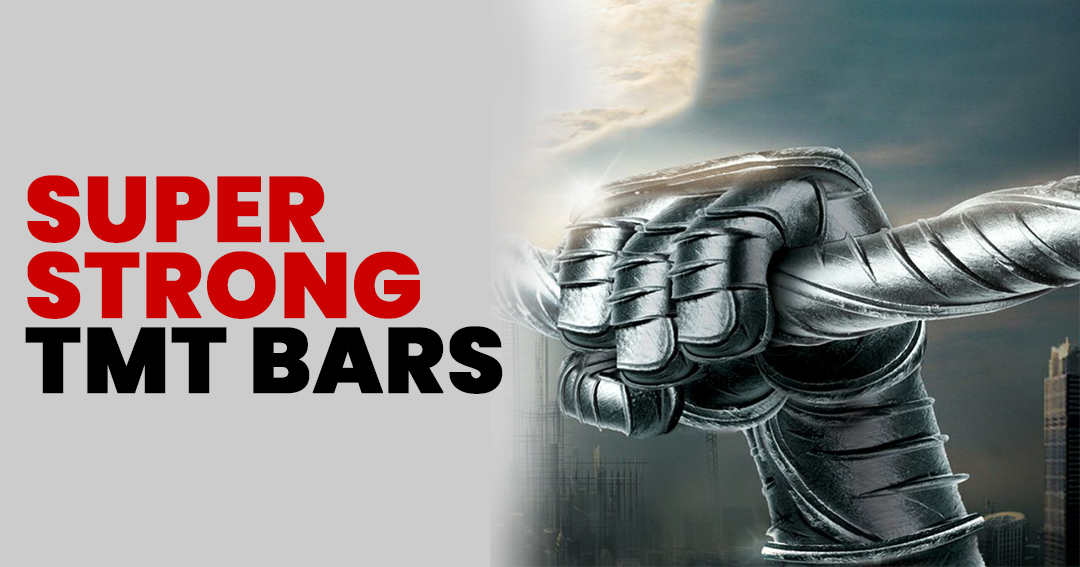The Top Mistakes in TMT Bar Selection and How to Fix them

- By : admin
- 0 Comments
When it comes to construction, the importance of using the right materials cannot be overstated. Among these materials, TMT bars, or Thermo-Mechanically Treated bars, play a crucial role in providing structural integrity and strength to buildings and infrastructures. However, the process of selecting the right TMT bars is often fraught with challenges, and making the wrong choice can have serious consequences. This blog will explore common mistakes to avoid when selecting super strong TMT bars for your project, ensuring that you make informed decisions that lead to successful outcomes.
Common Mistakes to Avoid When Selecting TMT Bars
1. Ignoring Quality Standards
One of the most significant mistakes in selecting TMT bars is overlooking the quality standards set by national and international organizations. Quality standards ensure that the bars meet specific strength, ductility, and reliability requirements.
What to Do: Always check for certifications from recognized bodies like the Bureau of Indian Standards (BIS) or ASTM International. Ensure that the TMT bars you are considering adhere to these standards to guarantee their performance and durability.
2. Not Considering the Grade of TMT Bars
TMT bars come in different grades, typically denoted by numbers such as Fe415, Fe500, and Fe600. These grades indicate the yield strength of the bars, with higher numbers representing stronger bars.
What to Do: Assess your project requirements carefully. For structures subjected to high loads or seismic activity, opting for a super strong TMT bar with a higher grade (Fe500 or Fe600) is advisable. Conversely, for less demanding applications, lower grades may suffice.
3. Overlooking the Source of Supply
The supplier’s credibility plays a crucial role in determining the quality of TMT bars. Choosing an unknown or unverified supplier can lead to receiving substandard products that do not meet the necessary specifications.
What to Do: Research suppliers thoroughly. Look for established companies with a good reputation in the market. Customer reviews, testimonials, and industry experience are indicators of a reliable supplier.
4. Failing to Evaluate Environmental Conditions
Environmental factors, such as humidity, temperature, and exposure to chemicals, can significantly impact the performance of TMT bars. Using bars that are not suited for specific environmental conditions can lead to corrosion and weakening over time.
What to Do: Evaluate the environmental conditions of the construction site. For coastal areas or regions with high humidity, consider using super strong TMT bar with corrosion-resistant properties to ensure longevity.
5. Not Accounting for Structural Requirements
Every construction project has unique structural requirements based on its design and intended use. Failing to consider these requirements can lead to selecting inappropriate TMT bars.
What to Do: Consult with structural engineers to determine the specific needs of your project. This includes understanding the load-bearing capacity, span lengths, and the types of loads (static or dynamic) that the structure will encounter.
6. Neglecting to Verify the Weight of TMT Bars
Weight is an important factor when selecting TMT bars, as it directly affects transportation and handling costs. Some buyers overlook the actual weight of the bars, assuming that all suppliers provide similar products.
What to Do: Verify the weight specifications provided by the supplier. Opt for super strong TMT bar that offer a favorable strength-to-weight ratio, as this can lead to cost savings during transport and installation.
7. Disregarding the Bar Length
TMT bars come in various lengths, and failing to consider the appropriate length for your project can result in wastage and increased costs.
What to Do: Assess your project plans and determine the required lengths of TMT bars. Ordering the right lengths can minimize waste and reduce the need for cutting and joining, which can compromise the structural integrity.
8. Overemphasizing Price Over Quality
While staying within budget is essential, focusing solely on the price when selecting TMT bars can lead to choosing inferior products. Cheaper options may not provide the necessary strength and durability, ultimately costing more in the long run due to repairs or failures.
What to Do: Strike a balance between cost and quality. Invest in super strong TMT bars that offer the best value for money, considering both upfront costs and long-term performance.
9. Ignoring the Importance of Proper Storage and Handling
Even the best quality TMT bars can suffer from damage if not stored and handled correctly. Improper storage can lead to rusting or bending, affecting their performance.
What to Do: Ensure that TMT bars are stored in a dry and elevated area, protected from moisture and physical impact. Train your staff on proper handling procedures to prevent damage during transportation and installation.
10. Neglecting to Seek Professional Advice
Many individuals attempt to select TMT bars based solely on their own knowledge or recommendations from non-experts. This approach can lead to poor decision-making and costly mistakes.
What to Do: Always consult with professionals, such as structural engineers or experienced contractors, when selecting TMT bars. Their expertise can help you make informed decisions that align with your project’s needs.
Conclusion
Selecting the right super strong TMT bar is crucial for the success of any construction project. By avoiding the common mistakes outlined in this blog, you can ensure that you choose the right materials that meet your project’s requirements and comply with safety standards.
Remember, investing time and effort in selecting quality TMT bars will not only enhance the structural integrity of your project but also lead to long-term cost savings and peace of mind. As you embark on your next construction venture, keep these tips in mind to make informed decisions and ensure the success of your project.
